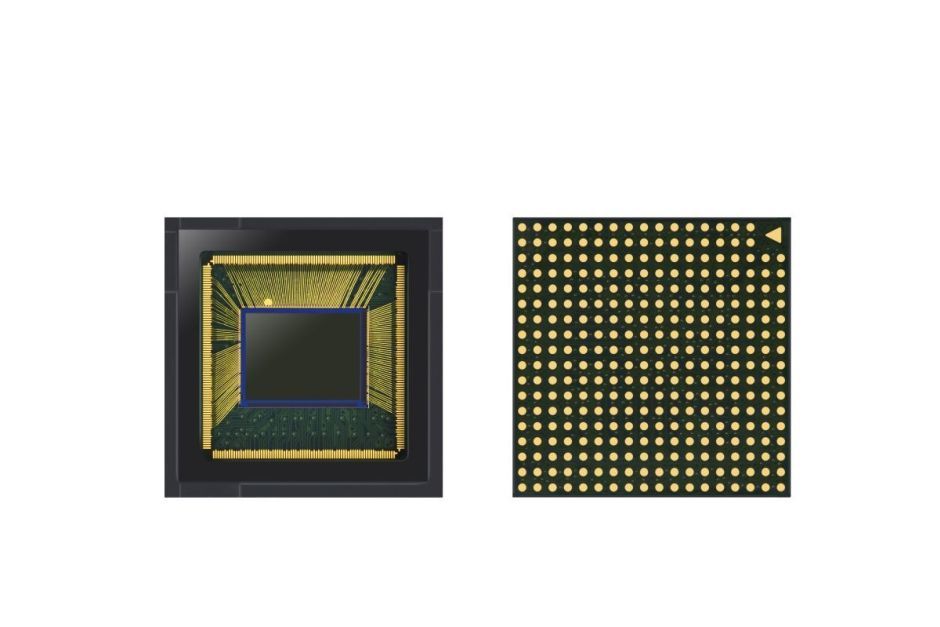Samsung could soon break camera resolution record... with a mid-range phone

The Galaxy A70 comes with a 32 + 8 + 5MP triple lens setup
A new record in terms of high-res mobile photography
While these types of achievements and pioneering moves are largely meaningless, Samsung unveiled the world's first 64-megapixel image sensor for smartphones with pretty great fanfare a couple of weeks ago. This ISOCELL Bright GW1 powerhouse, however, hides a number of neat tricks up its sleeve apart from the record-breaking megapixel count.

The world's first 64MP smartphone imaging sensor is small but very powerful
Using something called pixel-merging Tetracell technology, the teeny-tiny 0.8-micrometer sensor promises "high quality images in all light conditions" by merging four pixels into one, which means photos will actually be snapped at 16 rather than 64MP resolution when needed. Meanwhile, a groundbreaking "remosaic algorithm" (don't worry, you don't have to remember these specialized terms) will allow the GW1 sensor to produce highly-detailed 64MP shots in brighter settings.
Essentially, the single camera expected to reside on the back of the upcoming Galaxy A70S could bring the best of both worlds together, delivering the sharpest possible images in both direct sunlight and darker environments without aiming to simply produce snapshots at the highest resolution available. All in all, we have every reason to expect the lone rear shooter on the A70S to improve the general capabilities of the 32 + 8 + 5MP triple camera setup featured by the "regular" Galaxy A70.
Is this the future of high-end smartphone imaging?
Maybe, but also... maybe not. Probably not, even. After all, one of the best mobile photography systems in the world is still Google's seemingly modest 12MP single shooter on the back of the Pixel 3, 3 XL, 3a, and 3a XL. There's absolutely no reason for the search giant to start pursuing megapixel records when its combination of sophisticated hardware and perfectly fine-tuned software is capable of producing such impressive real-world results.

The megapixel count of the Pixel 3's single camera is not very relevant in real-life usage
Instead, it looks like more and more manufacturers will try to cram more and more megapixels into more and more mid-range devices. At the same time, OnePlus and Asus have recently unveiled new flagships with 48MP primary cameras and a second or even a third rear shooter assisting with things like ultrawide shots, bokeh effects, and zoom. It's therefore likely that the entire industry will eventually follow this fledgling trend.
For the time being, it seems unlikely that the Galaxy Note 10 will go so high in terms of image resolution, as Samsung is likely to experiment with the 64MP and "Tetracell" technology on a smaller scale before trying to make it mainstream. The eventual next step could be a 100MP camera, but first, let's see how the Galaxy A70S turns out. After all, Samsung didn't exactly hit a home run with a triple lens Galaxy A9 (2018) that looked pretty remarkable on paper either.

None of the Galaxy Note 10's three rear cameras are expected to go as high as 64 megapixels
Unfortunately, we also don't know much about the Galaxy A70S just yet. If its predecessor is anything to go by, an extra-large screen, upper mid-range processor, generous memory count, relatively hefty battery, and reasonable price point are to be expected. Official US availability is unlikely, although the Galaxy A70 can be purchased from B&H Photo Video for $400 right now in a Latin America variant compatible with US LTE bands.
Follow us on Google News


![Some T-Mobile users might be paying more starting in March [UPDATED]](https://m-cdn.phonearena.com/images/article/176781-wide-two_350/Some-T-Mobile-users-might-be-paying-more-starting-in-March-UPDATED.webp)











Things that are NOT allowed:
To help keep our community safe and free from spam, we apply temporary limits to newly created accounts: